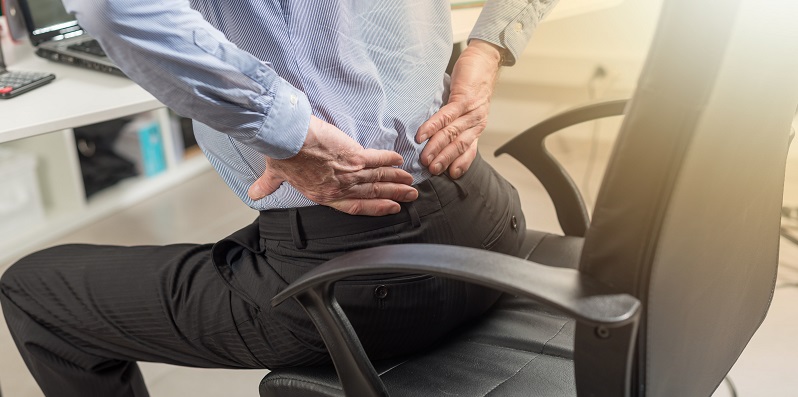Does Your Back Hurt? Check Your Chair
Category: Back Pain | Author: Stefano Sinicropi

There are a number of threats to the health of your spine, but many of those are obvious threats as the result of physical trauma. Falling off a ladder, getting in a car accident, or a painful collision on the football field can all lead to back pain. But so too can less obvious causes, like the repetitive motion of hunching over an assembly line at work or being on your feet all day. Finally, there are also hidden causes of back pain, and the one we want to put in the spotlight today is the problems your chair or couch can cause for your spine.
Most people don’t perceive a chair as a threat to their spine, and while it may not be a threat in the traditional sense, it can certainly take a toll on your back. That’s because staying in a static position can actually put added stress on your spine. See, when you’re moving, stress is regularly displaced throughout your whole body, but when you’re seated, stress is channeled to points of contact with the ground. Most of this stress is dispersed through your buttocks when seated, but the pressure is felt most notably in your lumbar spine.
Excessive stress on your lumbar spine can overwork the spinal muscles, predisposing them to strain or spasms, and it can also expedite lumbar disc degeneration and shifting. When these discs shift, they can compress spinal nerves that run through narrow openings in the spinal canal. Even small shifts in these discs can lead to pinched spinal nerves.
Can Be Self-Fulfilling
Another issue with the seated position is that it can lead to back pain becoming a self-fulfilling prophecy. For example, in patients who are overly sedentary, this seated position can contribute to spinal muscle strains or herniated spinal discs. This leads to pain in the region, and many people find that rest helps to alleviate symptoms in the short-term. To reduce their pain, they limit movement and sit down, which can in turn make pain worse.
That’s not to say that sitting is always awful for your spine, but you should be mindful about your seated position because a lot of the seats we use on a daily basis don’t push our spine into a healthy location. For example, odds are your office chair is lacking ample cushioning, which puts more pressure on your spine, and maybe your driver’s seat is reclined so you have to lean forward in order to drive, depriving your spine of support. The same can be said for your couch or sofa, which you may sink into, putting excess pressure on your lower back. Cushioning should be ample but also supportive. If you’re sinking in too deeply, it’s actually your lower back that’s doing the work to disperse stress.
When seated, strive to sit up straight so your head is positioned directly over your shoulders. If you find yourself leaning forward or reclining a bit in a seated position, your lower back or cervical spine will feel it after prolonged periods. Staying in alignment can help your body handle the natural stress without needing to disperse more as a result of gravity entering the equation.
Finally, consider replacing chairs or sofas that are no longer supportive of your spine. Consider it an investment in your health, because a comfortable and supportive chair can pay for itself many times over if it helps keep you out of the doctor’s office with back problems. Evaluate all the chairs you sit in throughout the day and make the posture changes that you can control. Also, you can help prepare your spine for the stress of sitting with regular exercise and strength training. Make it a point to get regular exercise 3-4 times a week and don’t overlook your core, as it plays a crucial role in the health of your spine.
If your back is hurting and you suspect it is being caused by excess hours in a seated position, reach out to Dr. Sinicropi to learn more about your treatment options or to get an official diagnosis. For more information, give our office a call today at (651) 430-3800.